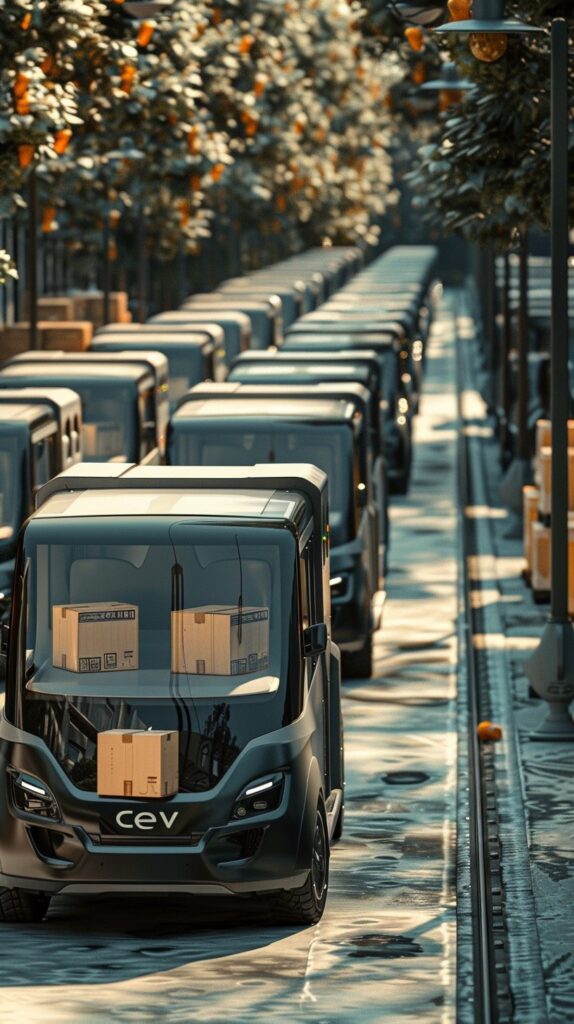As autonomous vehicles (AVs) move closer to becoming a reality, they are poised to revolutionize more than just the way we drive. Commercial real estate (CRE) will also feel the ripple effects, particularly in one often-overlooked area: parking lots.
Imagine a world where parking lots are no longer vast, unused spaces but thriving hubs for new developments and creative land use. The shift from traditional cars to self-driving vehicles is set to transform how we think about real estate, transportation, and city planning.
Let’s dive into how autonomous vehicles will reshape parking lots and what it means for the future of CRE.

1. The Decline of Traditional Parking Spaces
Today, vast parking lots dominate urban and suburban landscapes, designed to accommodate personal vehicles. With autonomous vehicles, we may not need nearly as much parking space. AVs will drop passengers off at their destination and then drive themselves to a centralized location or return home on their own. This means fewer parking lots will be needed in prime real estate areas, opening up valuable land for redevelopment.
For CRE professionals, this signals an exciting opportunity: what happens when those sprawling parking lots are no longer needed?
2. Reimagining Urban Spaces
Cities could look very different once AVs reduce the demand for parking. Spaces currently reserved for cars can be repurposed into parks, retail spaces, office buildings, and even affordable housing. By freeing up prime urban land, autonomous vehicles could spark a new wave of development, increasing property values and creating vibrant, walkable communities.
For developers and investors, the key is being ready to seize these new opportunities. As AV technology becomes mainstream, underutilized parking lots could become hot commodities.
3. Creative Land Use: Parking Lots as Multi-Purpose Hubs
While the demand for parking may decrease, parking lots won’t disappear entirely. Instead, they might evolve into multi-purpose hubs. Think of parking lots as flexible spaces that can serve multiple functions, from electric vehicle charging stations to autonomous vehicle maintenance hubs. These spaces can also be used for pop-up retail, outdoor events, or last-mile delivery centers for e-commerce.
Developers could redesign parking structures to be more adaptable, converting them into retail or residential spaces as demand for parking continues to drop. This creative approach allows for maximizing the return on investment while meeting the needs of a rapidly changing urban landscape.
4. The Impact on Retail and Office Spaces
Retail and office buildings typically require large parking lots to accommodate visitors and employees. With fewer cars on the road and the rise of AVs, businesses won’t need to dedicate as much space to parking. This opens the door for rethinking how retail and office properties are developed.
For retail, this could mean larger outdoor spaces for dining and events, making the shopping experience more engaging and enjoyable. For office buildings, it could allow for additional green spaces, employee lounges, or even on-site housing. The flexibility in design will give property owners and developers the chance to create more desirable and functional spaces.
5. Reducing the Environmental Impact
Parking lots are notorious for their environmental footprint. They increase heat in urban areas (creating “heat islands”), contribute to stormwater runoff, and consume valuable land that could be used more efficiently. Autonomous vehicles and the corresponding reduction in parking could significantly lower the environmental impact of cities.
With less need for sprawling asphalt lots, CRE developers can integrate more green spaces, rooftop gardens, and eco-friendly designs. This shift aligns with growing trends toward sustainability in real estate and the increasing demand from tenants and investors for environmentally responsible projects.
6. Autonomous Vehicles and Suburban Growth
While the rise of AVs will reduce parking demand in cities, it could have the opposite effect in suburban and rural areas. Autonomous vehicles will make longer commutes more convenient, potentially driving more people to live outside of urban centers. This could spark growth in suburban areas, requiring commercial real estate professionals to adapt to changing demographics and consumer habits.
Suburban retail centers, office parks, and mixed-use developments could benefit from increased demand, while developers may also rethink parking needs in these areas, creating more flexible and adaptable designs for AVs.
7. Preparing for the Future
So, what can commercial real estate professionals do to prepare for the arrival of autonomous vehicles and the changes they will bring to parking lots? The key is to stay ahead of the curve by embracing flexibility and creative thinking in property development.
Here are a few steps developers and investors can take:
- Reevaluate parking assets: Assess current parking lots and garages for their long-term potential. Could they be converted into more valuable assets?
- Design for adaptability: New developments should be designed with flexibility in mind, allowing for future changes in parking demand and usage.
- Stay informed on AV technology: Understanding the trajectory of autonomous vehicle adoption will help you make informed decisions about property investments.
- Engage with urban planners: Work with city planners and local governments to explore how underused parking lots can be repurposed for community benefit.
Conclusion
Autonomous vehicles will dramatically reshape the commercial real estate landscape, particularly when it comes to parking lots. As demand for parking decreases, prime real estate opportunities will emerge, offering the chance to rethink and redevelop spaces once reserved for cars.
For CRE professionals, this shift is full of potential. By embracing innovation and planning for the future, developers can capitalize on the transformation of parking lots and turn these underutilized spaces into thriving commercial hubs.
The future is autonomous—and for commercial real estate, it’s full of exciting possibilities!

